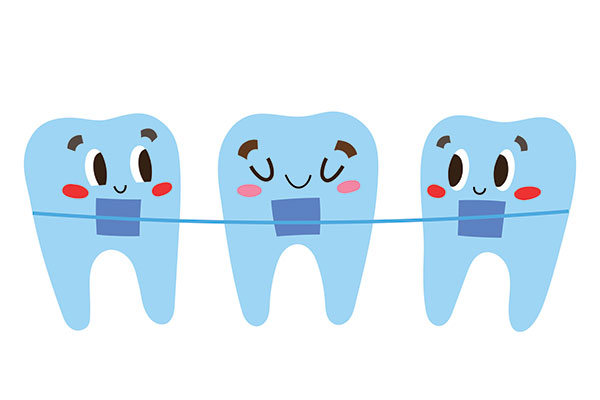A Dentist for Kids Discusses Braces for Children

A dentist for kids can help straighten your child's smile. Braces have been used to straighten teeth for hundreds of years. They can address a wide range of orthodontic issues like crooked teeth, crowded teeth, overbites, underbites, and crossbites. Braces work by applying gentle force on teeth covered with them, slowly pushing them to an improved alignment.
Our pediatric dentist recommends performing teeth straightening treatments early on since a child's jaw and facial structures are still soft, making them easier to manipulate than an adult's hardened bone structures. Treatment with braces can start as early as age seven.
Getting braces from a dentist for kids
Braces have two main components: brackets that are cemented to each of the patient's teeth and wires that link the brackets in each dental arch. The tighter these wires are, the more force the appliance applies to the child's teeth. The force gradually moves the patient's teeth to the targeted position over time.
Braces can be used to fix a wide range of orthodontic issues, from those caused by poor positioning of a person's teeth to those caused by jaw abnormalities. Treatment times are typically anywhere between 12 to 36 months.
The American Association of Orthodontists recommends bringing your child in to have their bite assessed by the time they are seven. At this point, most of the child's permanent teeth should have erupted, so issues like the alignment of their teeth or bite should be noticeable at that point.
Children sometimes struggle with the idea of wearing braces for an extended period since that means they cannot enjoy sticky and gummy foods during their treatment. Traditional braces take over a person's smile since the metal brackets and wires cover a significant portion of their teeth. Some would say they look like railroad tracks on a person's teeth.
Fortunately, modern braces are a lot sleeker and less conspicuous than their older counterparts. They can also be customized with cool colors and logos to suit your child's personal style. Clear aligners can also be used to address some teeth alignment issues, but dentists rarely recommend them for children since they require a high level of commitment to the treatment. These appliances must be worn 22 hours daily for treatment to be effective. Clear aligners are typically recommended for teenagers who can handle that level of responsibility.
The process
Installing braces is unique for each patient since all people have different mouths. Here is what the procedure typically looks like:
- The dentist for kids starts the procedure by cleaning and drying the child's teeth
- Adhesives are applied to the patient's teeth so brackets can be attached to each one
- Wires are then used to connect all the brackets in each dental arch
- Elastic bands are then used to secure the appliance
The entire procedure takes about one to two hours. Most patients experience some discomfort after braces are placed as the soft tissues in their mouth adjust to the appliance. The discomfort should go away in a week as the child gets used to the appliance.
We can straighten your child's teeth
Your child might need braces if they have poorly aligned teeth. Call or drop by our Richmond clinic to set up an appointment with our pediatric dentist.
Request an appointment here: https://www.grandparkwaypediatricdental.com or call Grand Parkway Pediatric Dental at (832) 579-0960 for an appointment in our Richmond office.
Check out what others are saying about our Dentist For Kids services on Yelp: Read our Yelp reviews.
Recent Posts
Dental fillings for kids are crucial in preventing many dental issues. Baby teeth can develop cavities. Correcting this problem is important for developing permanent teeth. Here are the details on how preventive dentistry uses dental fillings for kids.Research shows that many school-age kids suffer from cavities. This disease is common even if it is preventable.…
Dental fillings for kids are one of the most common treatments for tooth decay in children. The earlier tooth decay is detected in a child’s tooth, the easier it is to treat. Let us examine why treating childhood tooth decay is crucial and how a pediatric dentist treats it.According to the Centers for Disease Control…
Dental fillings for kids can be nerve-wracking for some kids, likely due to the necessary tools. While we aim to make this simple process as smooth and painless as possible, we need your help. Getting a firm grasp on what your kids can expect during this procedure and how to prevent a future need for…
Getting dental fillings for kids can help improve your child’s dental health. It can restore the affected teeth and relieve your child’s pain. Understanding the process can help you prepare your child for the next appointment. Here are the details on what parents like you must know about dental fillings for kids.The dentist will discuss…


